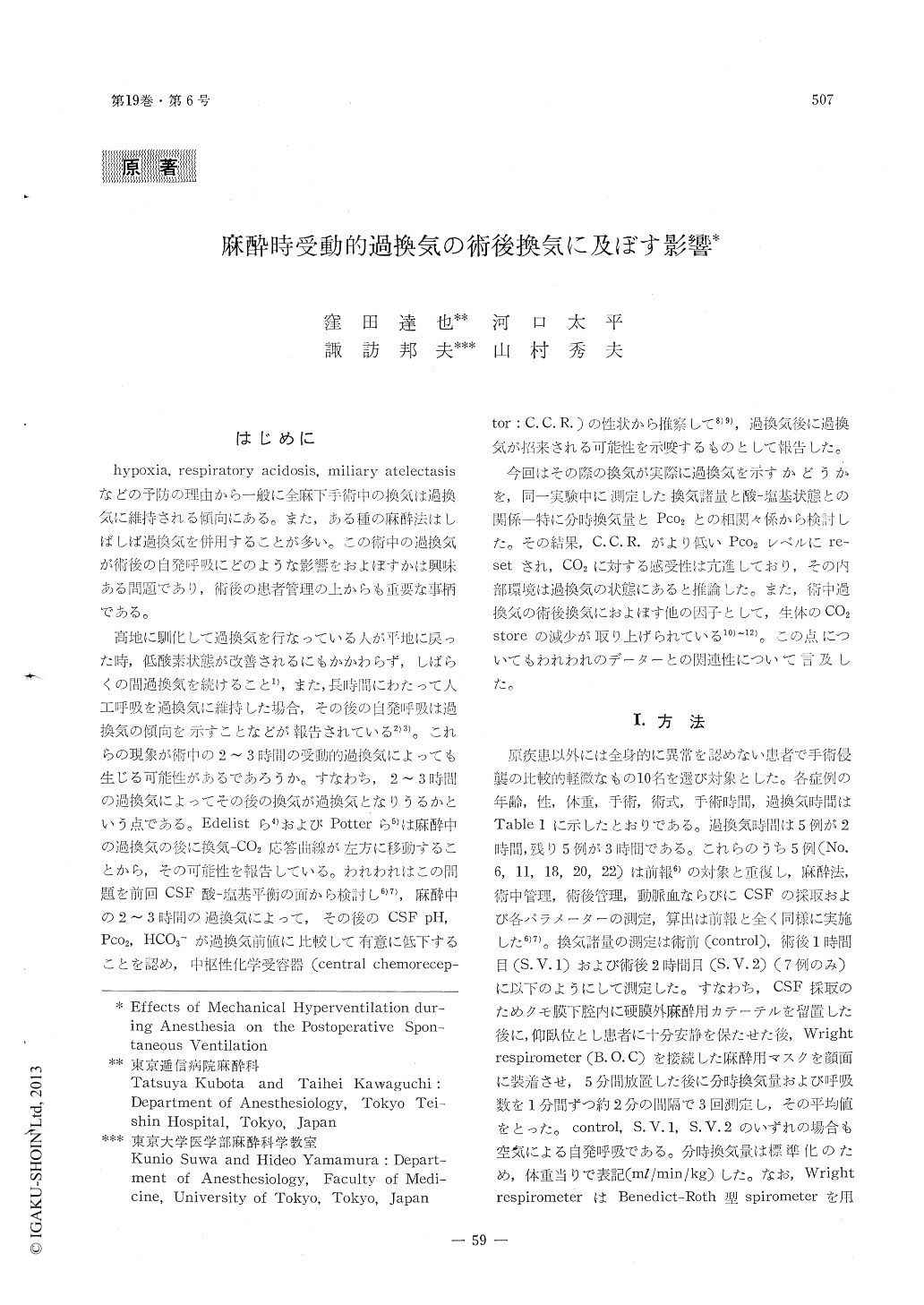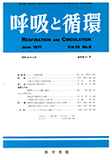Japanese
English
- 有料閲覧
- Abstract 文献概要
- 1ページ目 Look Inside
はじめに
hypoxia, respiratory acidosis, miliary atclectasisなどの予防の理由から一般に全麻下手術中の換気は過換気に維持される傾向にある。また,ある種の麻酔法はしばしば過換気を併用することが多い。この術中の過換気が術後の自発呼吸にどのような影響をおよほすかは興味ある問題であり,術後の患者管理の上からも重要な事柄である。
高地に馴化して過換気を行なっている人が平地に戻った時,低酸素状態が改善されるにもかかわらず,しばらくの間過換気を続けること1),また,長時間にわたって人工呼吸を過換気に維持した場合,その後の自発呼吸は過換気の傾向を示すことなどが報告されている2)3)。これらの現象が術中の2〜3時間の受動的過換気によっても生じる可能性があるであろうか。すなわち,2〜3時間の過換気によってその後の換気が過換気となりうるかという点である。Edelistら4)およびPotterら5)は麻酔中の過換気の後に換気−CO2応答曲線が左方に移動することから,その可能性を報告している。
The effects of mechanical hyperventilation during nitrous oxide-dTc anesthesia on the postoperative ventilatory volume, together with those on the acid-base status of the cerebro-spinal fluid (CSF) were studied. Previous in-vestigations from this laboratory suggested that the postoperative spontaneous hyperven-tilation might occur after the mechanical hy-perventilation maintained for more than two hours. The present study was undertaken to investigate whether the postoperative ventila-tion actually increase or not.

Copyright © 1971, Igaku-Shoin Ltd. All rights reserved.


